Welcome to Part 2 of our Growth Guidance Pro Tips Series where we shift the focus to brewery sales.
(In case you missed it, we want your brewery to turn pro. We kicked off the series last week in the taproom.)
As breweries make the transition from amateur to professional, besides the taproom, distribution is one of the first places those pro habits start to materialize.
You start to operate your sales team less like a local mom and pop…
And more like a high-performing sales organization.
Part of that transition is adopting a more strategic and goal-oriented approach.
Part of that is keeping your reps accountable to that strategy and managing week-to-week performance accordingly.
But one thing that’s always there is a set of numeric targets to refer back to.
Start from the numbers, and work the plan from there.
And you might be surprised at what you’ve achieved six months from now.
Pro Tip 6: Give Your Reps A Roadmap
When setting goals for outside sales reps give them a “how I get there” roadmap.
For example, in Case Equivalent (CE) terms:
- The current year’s annual CE’s sold is 26,000
- Next year’s goal is an increase of 20%
- That means our goal CE is 31,200
How do we get the additional 5,200 CE?
Here’s one way to break it down for your reps:

Now, keep in mind it should be their choice on how they achieve the goal.
Your job is to provide the framework and accountability.
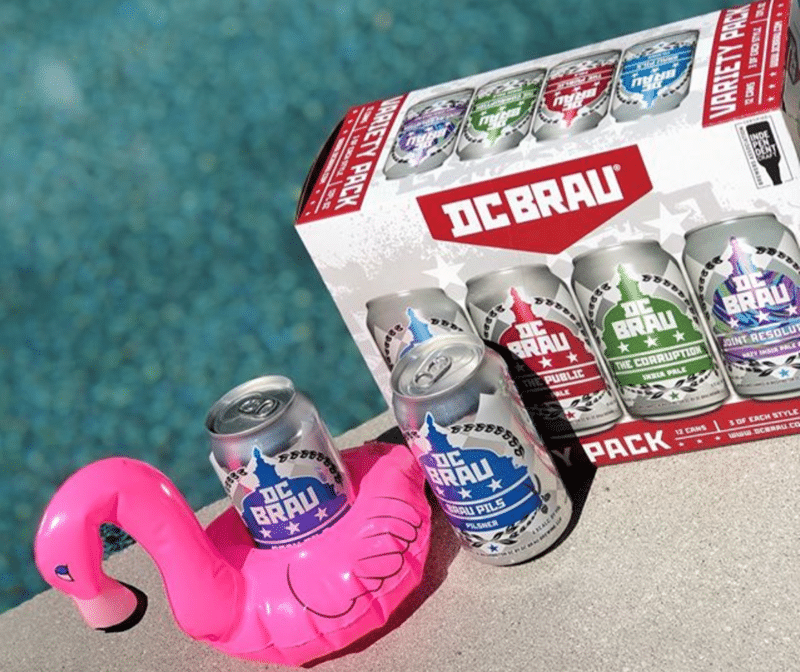
And please don’t forget this also assumes that the baseline of prior year sales will stay intact.
Keep the foundation strong, too.
Pro Tip 7: Account Visits
How many accounts do your outside sales reps see on a daily basis?
One suggestion is, on account visit days, they see 10-12 accounts.
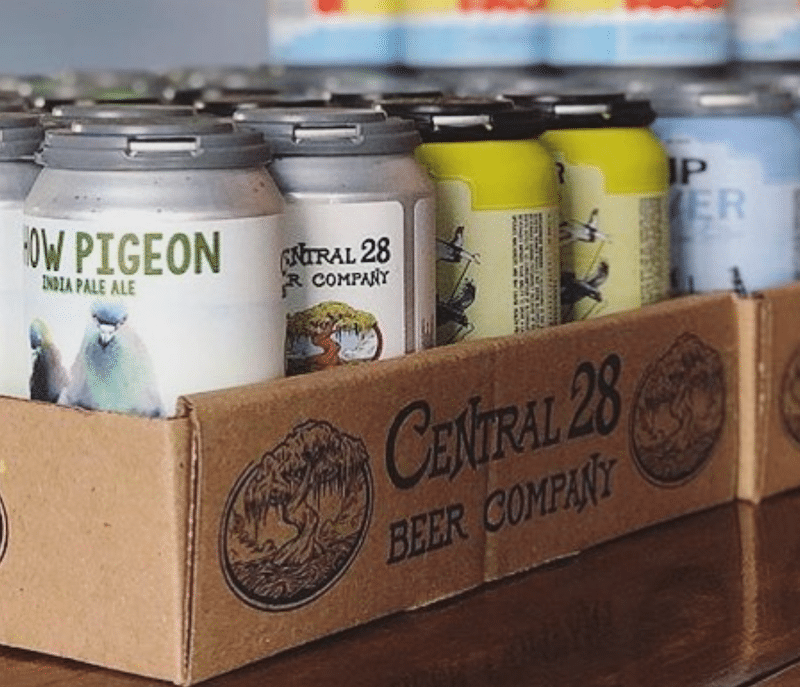
So if they dedicate 3-4 days a week to visiting accounts that would be around 30-40 accounts per week.
This will place the time and energy needed to keep your brand top of mind.
And in distribution, that’s the name of the game.
Brewery Sales Pro Tip 8: The Visit Log
Account visits should be logged into a system.
Most breweries begin with spreadsheet and eventually move to a CRM system.
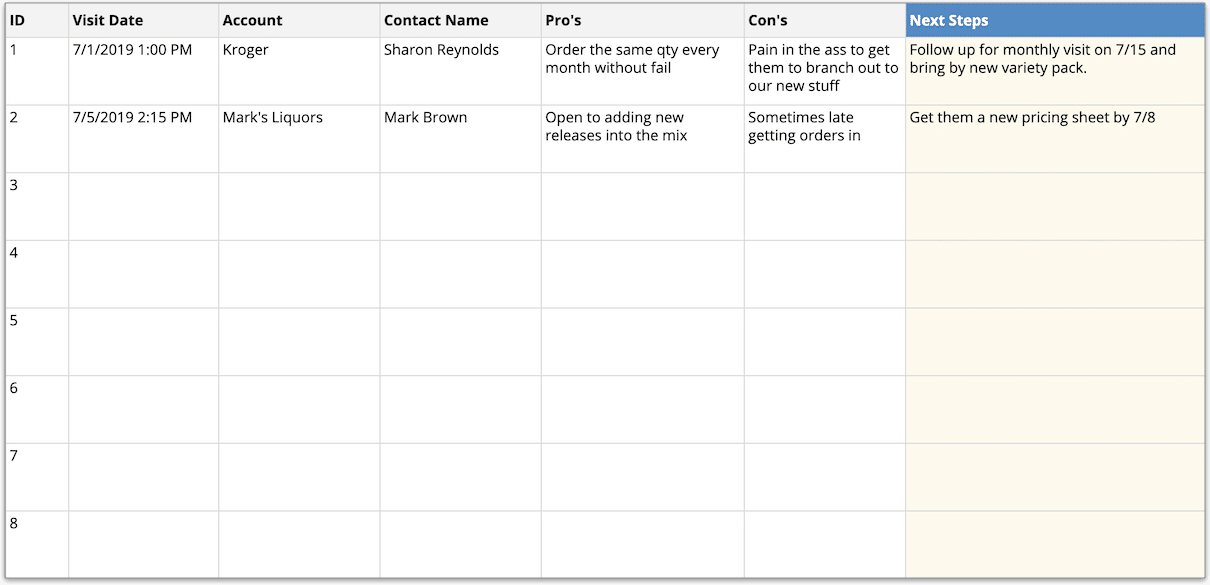
Items to document should include:
- Account name
- Date and time of visit
- Met with who
- Pro’s
- Con’s
- Next steps
Pro tip bonus: log the POS given to each account.
A director of sales should review these entries once a week for accuracy and any potential action items.
Pro Tip 9: The Sales Rep Salary
A sales rep’s base salary should be less than 15% of their territory sales per month.
An ideal percentage would be between 10%-15%
If you are paying a sales rep a base salary of $45,000 per year, that breaks down to $3,750 per month.
This means their monthly sales for that rep should be a baseline of $25,000 ($3,750/.15).
Over time the monthly sales should grow to $31,250-$37,500.
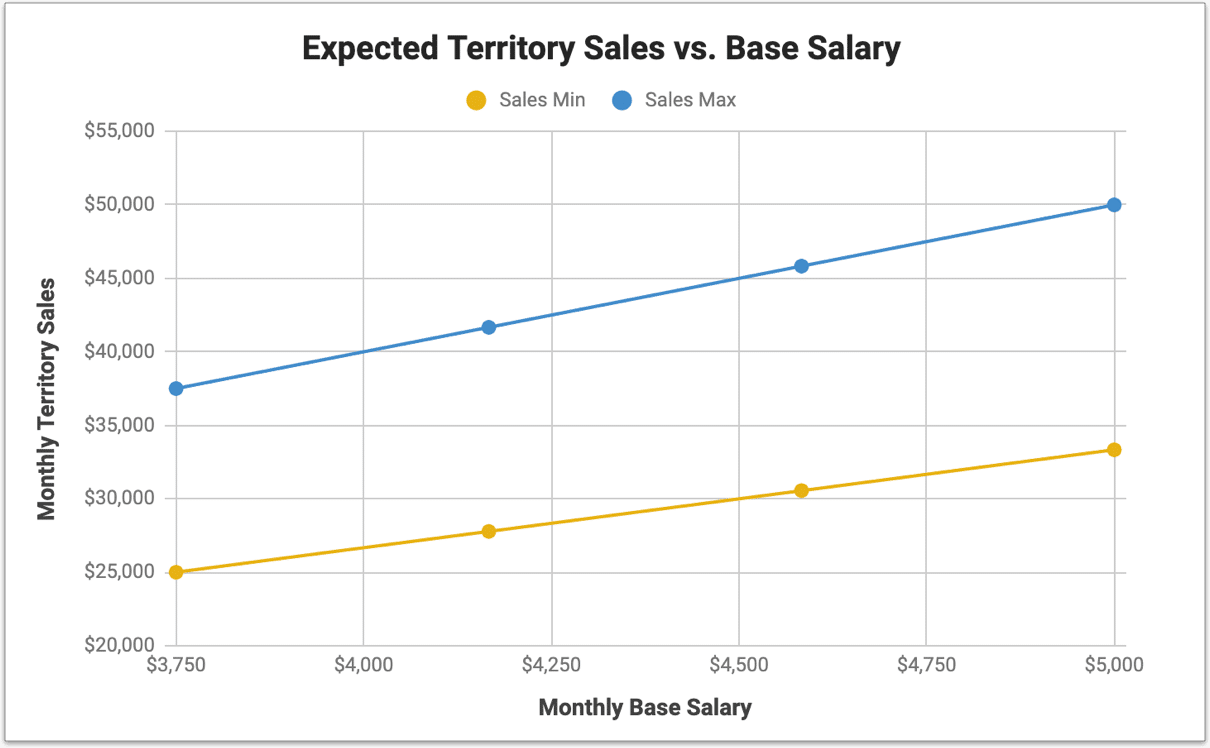
The more they can sell the smaller the comp percentage will be.
How does your reps’ compensation compare?
Side Note: This is one of a slew of outside sales related questions we field on a weekly basis. Things like:
- How do you know when you need to start adding more reps?
- What does an optimal selling structure look like for a production brewery that self distributes?
- What does a model for scaling up look like?
- What are the best practices for actually making the sale?
- How can I improve accountability for my sales reps?
- How do I know what my sales reps are doing on a daily basis?
- What should your performance expectations be?
- What deliverables should you be looking for?
- It’s too difficult to get our reps to keep up with reporting and paperwork. How do we make it easier for them?
- What’s the right compensation structure for this role so that our reps are motivated to sell?
- How much should you budget for expenditures so that you don’t limit your rep and keep costs reasonable?
- How do we find good sales reps?
- What does the hiring process look like?
Yea… this aspect of the biz is rife with complexity and confusion.
And you can spin your wheels for years with the wrong approach, wrong hires, wrong comp setup.
Or you can, like our clients do, just fire off an email to us and get a same day answer.
It’s kind of our thing.
If you find this level of support valuable, it might be worth a discovery call.
Pro Tip 10: Weekly Lessons Learned
During your weekly sales meeting, a different rep should be responsible for telling a story from the previous weeks sales.
This should be a lesson all other reps can learn from.
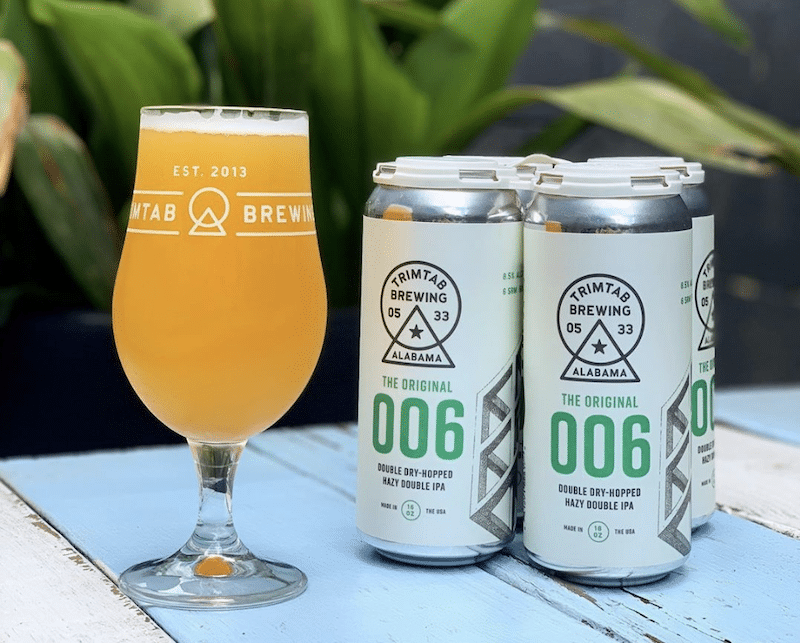
Examples include:
- How to get another placement
- How to get an initial tapline at a very strict account
- How to get another tap-line
- How to get POS displayed
- What is working on-premise
- What is working off-premise
Get ‘em talking, solving problems, and spreading ideas around.
Next Steps Towards Growth
Now, interestingly, this same week-in, week-out knowledge accumulation and improvement process holds true for what we do as well.
For example:
Just as a new account or an increased frequency of orders on the surface seems like it’s the result of this meeting, that call, or this new label design that pushed them over the edge, but in reality is really the result of the hard work of taking action and refining your process over time…
The tips and guidance you’re seeing us publish here are the result of years spent accumulating that same type of data and using that same type of experience to create frameworks and strategies that we have a high level of confidence in.
It looks a bit like an iceberg…
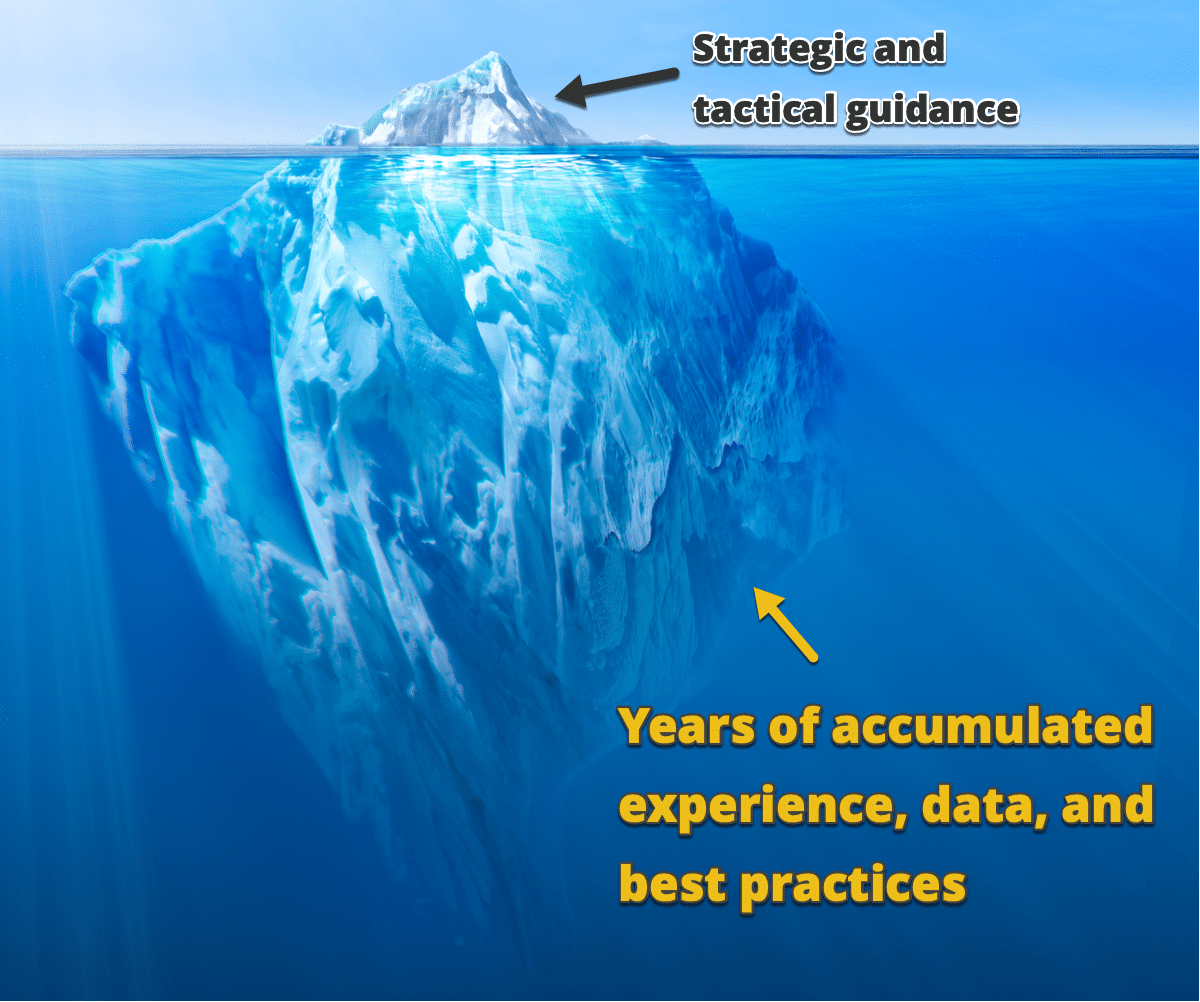
Where the foundation is built slowly, layer by layer.
But once it’s there, the visible result stands strong, robust against changes in the external environment.
This is what we’re referring to when we say that our objective is to “help our craft partners make industry-leading decisions.”
When our clients make the decision to work with us, they’re instantly augmenting their staff with that deep well of under-the-surface expertise that infuses their decision-making with a decade of accumulated patterns.
And it’s that improvement in decision-making that means:
- The ability to move fast without worrying about making irreversible errors
- Fewer mistakes and setbacks, both financially and with their team, brand, and mission
- Constant upward pressure on increased profitability, improved cash flow, and accelerated growth
And then the fact that we clean up, integrate, offload, and manage the brewery’s books, taxes, and financials (and do that better than anyone else) ends up as, honestly… a nice side benefit.
It’s why our clients don’t say:
“Small Batch Standard does our accounting really well.”
And do say things like:
“We hired Small Batch Standard because managing our financials was a massive drain on our time, and we weren’t doing a great job. Then, we were pleasantly surprised to find we had connected with a partner that has a keen sense for business development combined with the always valuable outsider perspective. They are much more than an accounting service, and as we prepare to grow Chris’ insight is increasingly valuable.”
And:
“We consider our relationship a partnership. Chris has been there every step of the way to help offer guidance for key financial decisions as well as operational questions. His team has demonstrated invaluable knowledge in the brewery industry and has kept us from flying blind.“
Ultimately our goal is to help owners uncover opportunities to increase profitability, maximize efficiencies, and avoid stumbling blocks on their path to growth.
To act as a guide.
And to enable you to focus on doing what you do best.
So if this resonates and aligns with your goals, then it would be worthwhile to set up a time to discuss.
You can start that process here.
And next week we’re onto some new territory: marketing.